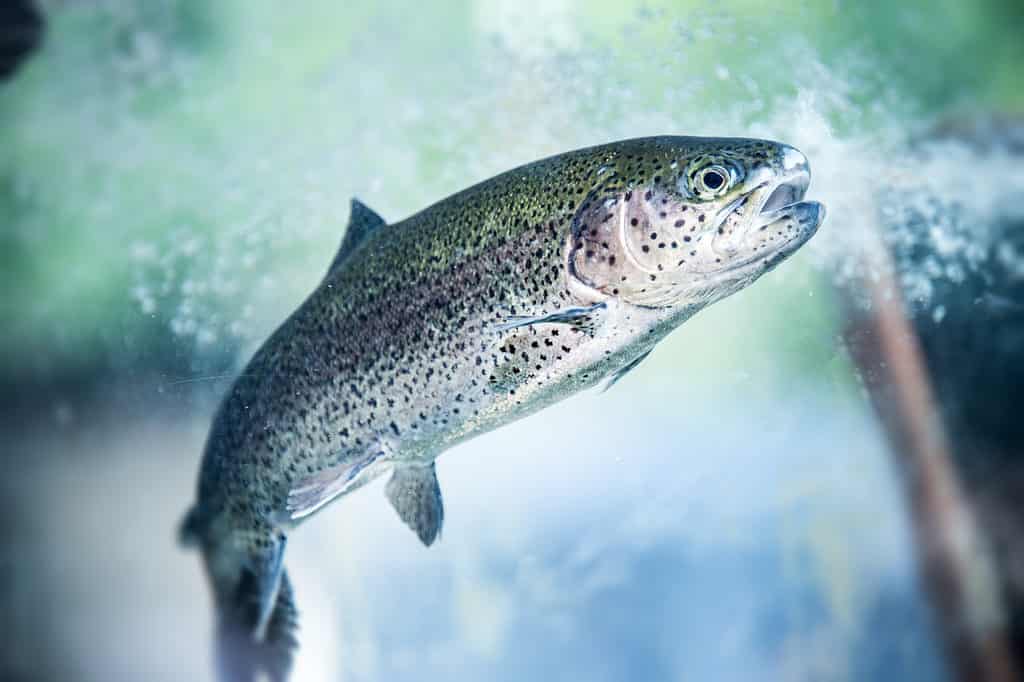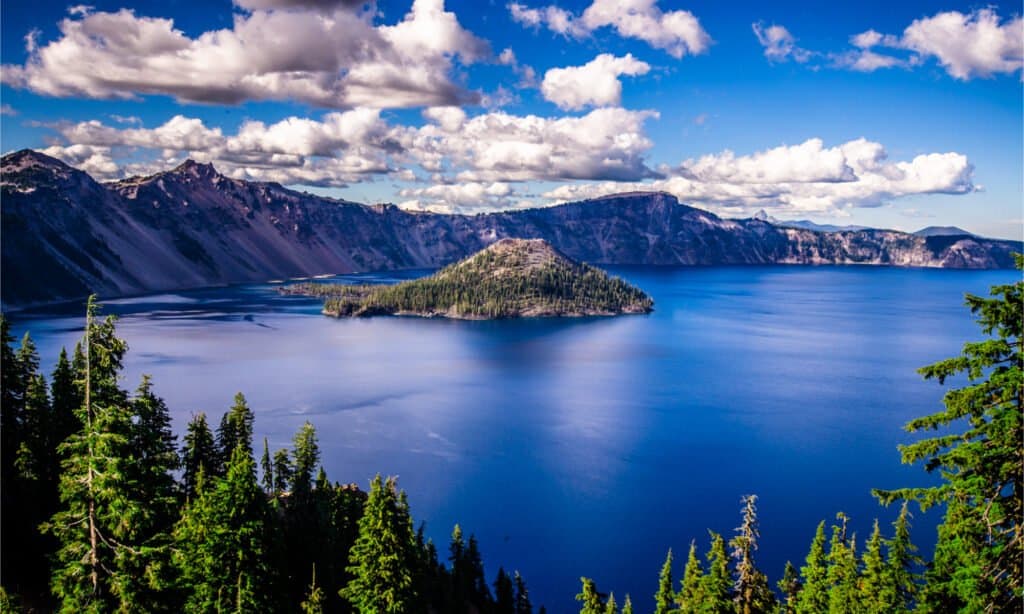
Lake Michigan stays true to its name, which translates to ‘great water.’ The 22,404 square miles (58,030 square kilometers) lake is one of the largest and deepest lakes in the United States, and it ranks as the world’s largest lake in one country by area. The Michigan Lake, unlike all the other Great Lakes of America, does not touch Non-American territories.
How deep is Lake Michigan, compared to the other Great Lakes? It’s not actually the deepest of the five. The deepest Great Lake is Lake Superior with a maximum depth of 1,333 feet. Lake Superior is also the fourth deepest lake in the United States. Lake Michigan actually comes in second but is 44% more shallow than Lake Superior. Following Lake Michigan in depth are Lakes Ontario, Huron, and Erie, respectively.
Lake Michigan is considered one of the deadliest lakes in the country. While all of the great lakes have similar dangers, Lake Michigan has the largest number of sandy beaches that invite swimming. It also has very strong north winds which create high waves and dangerous currents. This combination leads to more drownings in this lake than in all the others combined. The waves and currents of Lake Michigan may make it hazardous to swim in but it also draws lake surfers who love the big waves that form on this lake.
Let us answer the question: How deep is Lake Michigan?
How Big is Lake Michigan?

Lake Michigan contains 1,200 cubic miles of water, equivalent to one quadrillion gallons of water.
©Frederick Millett/Shutterstock.com
Lake Michigan’s large surface area makes it the third largest of the five Great Lakes by surface area; only Lake Superior and Lake Huron are larger. Lake Michigan is, however, larger than Lake Huron based on volume as the lake contains 1,200 cubic miles of water, equivalent to a quadrillion gallons of water.
The lake stretches over 310 miles (498.90 kilometers) with a shoreline of about 1,640 miles (2639.32 kilometers). The large freshwater lake is bordered in the east and north by Michigan, southwest by Illinois, southeast by Indiana, and west by Wisconsin. The shorelines of Lake Michigan have some of the most expansive dune regions in the world, with over 270,000 acres.
Lake Michigan is connected to Lake Huron in its north end by a 5-mile wide canal at the Straits of Mackinac, thus making the two bodies into a single lake called Lake Michigan-Huron. Together, they are considered the largest freshwater system by surface area worldwide and the fourth largest by volume.
How Deep is Lake Michigan?
According to the United States EPA, Lake Michigan has an average depth of 279 feet (85.04 meters). Of the Great Lakes, only Lake Superior and Lake Ontario have higher average depths, estimated at 483 feet (147.22 meters) and 283 feet (86.26 meters), respectively.
What is the Maximum Depth of Lake Michigan?

The maximum depth of Lake Michigan is 925 feet, roughly the height of a 92-story building.
©Sean Pavone/Shutterstock.com
How deep is Lake Michigan at its deepest point? According to the Great Lakes Commission, the maximum depth of Lake Michigan is 925 feet (281.94 meters), roughly the height of a 92-story building. This maximum depth ranks Lake Michigan as the 9th deepest lake bottom in the United States. Although Lake Ontario trumps it by average depth, its maximum depth is higher than Ontario’s 802 feet (244.45 meters) lowest depth.
Lake Michigan’s deepest point is located in Chippewa Basin in Wisconsin, and the temperature averages 39 degrees at that depth for most of the year. Due to its high temperatures and climate, Lake Michigan has never been completely frozen year-round.
What is Lake Michigan’s Mean Surface Elevation?
The mean surface elevation of Lake Michigan is about 579 feet (176.48 meters) above sea level. The water surface elevation is similar to that of Lake Huron because of the narrow waterway between the two lakes, which keeps the respective flows of the two lakes at equilibrium.
With tall waves which can rise as high as 21 feet, you can travel through the entire Lake Michigan conveniently on a 20-foot boat. Smaller vessels can be used to travel or fish when faced with smaller waves.
What is the Widest Point Of Lake Michigan?
Statistics from the Indiana Department of Environmental Management show that Lake Michigan is about 118 miles (189.90 kilometers) wide. The narrowest part of the lake is believed to be about 91 miles (146.45 kilometers).

Rainbow trout can be caught in Lake Michigan.
©iStock.com/Max2611
Fish Species That Live in Lake Michigan
With over 100 streams and rivers flowing into the lake, many fish species migrate from other habitats into the deep lake. Lake Michigan’s primary sources of freshwater are St. Joseph, Kalamazoo, and Fox-Wolf Rivers. The Great Lake diverts some of its waters into the Mississippi River basin through the Chicago River. These many channels fill Lake Michigan with a variety of vast fish species, one of which is salmon which largely populates the lake’s waters.
The common salmon species in Lake Michigan include the Coho salmon, Atlantic salmon, Chinook salmon, and pink salmon. Other fish species in the lake are rainbow trout, bowfin, sea lamprey, crawfish, walleyes, sponges, and smallmouth bass.
Sea lamprey is considered one of the most dangerous fish species in the lake. Introduced as an invasive species in the lake, they hunt and kill lake trout. They are also attracted to the blood and bodily fluids of any creature.
What Lives at the Bottom of Lake Michigan?
Lake Michigan has the largest freshwater dune system in the world. However, this is not the only diversity the all-American lake offers, as it also boasts complex ecosystems and aquatic biodiversity.
At the bottom of Lake Michigan, you will find non-fish inhabitants of the lake, such as worms, mollusks, amphipods, and insect larvae. These small creatures provide food for non-native fish such as whitefish, round goby, and perch. Though these deep-water creatures aid Lake Michigan’s food web, the lake is plagued by quagga mussels, an invasive species, threatening the lake’s phytoplankton population.
Who Was the First Human to Reach the Bottom of Lake Michigan?
The first human to reach the bottom of Lake Michigan was not a fisherman, a lifeguard, or a deep diver. In 1985, Scientist Jeffrey Val Klump of the University of Wisconsin-Milwaukee, who was part of a research expedition, reached the bottom of Lake Michigan via a submarine. He was also the first to reach the bottom of Lake Superior in the same year.
Where Is Lake Michigan Located on a Map?
You’ll find Lake Michigan sandwiched among neighboring lakes Huron, Ontario, Eerie, and Superior. This famous cluster of freshwater lakes borders eight U.S. states: Minnesota, Wisconsin, Illinois, Indiana, Michigan, Pennsylvania, New York, and Ohio.
What is the Deepest Lake in the United States?
Crater Lake in Oregon is the deepest lake in the United States and the second deepest in North America. The lake’s maximum depth is 1,949 feet (594.06 meters), about 1,000 feet (304.80 meters) deeper than Lake Michigan. Despite the lake’s depth, it remains clear blue as all its water comes from snow and rainwater.

Crater Lake is the deepest lake in the United States, measuring a maximum depth of 1,949 feet.
©Pung/Shutterstock.com
The photo featured at the top of this post is © JaySi/Shutterstock.com
Thank you for reading! Have some feedback for us? Contact the AZ Animals editorial team.






